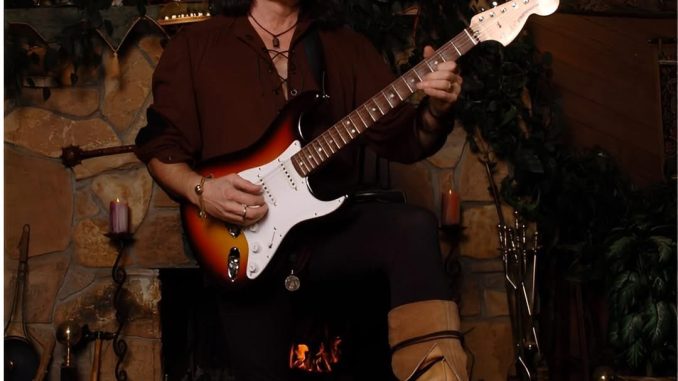
Few names in the history of rock command the same reverence as Ritchie Blackmore. The legendary guitarist of Deep Purple and Rainbow remains one of the most influential and enigmatic figures ever to hold a guitar. A master of both fire and finesse, Blackmore is the architect of riffs that have defined generations. From the immortal drive of Smoke on the Water to the epic grandeur of Rainbow’s anthems, his work reshaped what rock guitar could be—and left a legacy that continues to inspire musicians and fans alike.
Born in Weston-super-Mare, England, in 1945, Blackmore’s early fascination with the guitar quickly grew into an obsession with precision, tone, and style. By the mid-1960s, he had established himself as a sought-after session player, capable of adapting to any musical demand. Yet it was in 1968, when Deep Purple was formed, that Blackmore’s brilliance would find its stage.
The band’s early work hinted at greatness, but it was the 1972 release of Machine Head that catapulted them into the pantheon of rock gods. At the heart of that record was Smoke on the Water, a song anchored by one of the most famous riffs ever written. Simple yet devastatingly effective, the riff became a rite of passage for every aspiring guitarist. To this day, it remains an entry point into the world of rock music—a testament to Blackmore’s ability to craft something both accessible and immortal.
But Blackmore was never content to rest on simplicity. His playing was a unique fusion of rock’s raw power and the discipline of classical music. Unlike many of his contemporaries, he drew inspiration not only from blues and jazz, but from composers such as Bach and Beethoven. This classical influence gave his solos a sense of architecture and drama, turning every performance into more than just a showcase of technical ability—it became a story told through sound.
By the mid-1970s, restless for new horizons, Blackmore departed Deep Purple to form Rainbow. With Rainbow, he pushed his artistic vision further, blending medieval imagery, symphonic textures, and soaring vocals into a sound that felt both ancient and futuristic. Songs like Stargazer and Man on the Silver Mountain became anthems of grandeur, carried by Blackmore’s guitar lines that felt as though they had been lifted straight from the halls of legend.
On stage, Blackmore was a force of nature—moody, intense, and often unpredictable. His performances could veer from breathtaking brilliance to volatile confrontation. Yet this very unpredictability added to his mystique. Audiences never quite knew what to expect, and that made every concert unforgettable. He wasn’t just playing songs—he was channeling something larger than himself, something eternal.
Even as the rock landscape shifted in the 1980s and 1990s, Blackmore remained committed to following his own path. In the late 1990s, he surprised many by turning his back on hard rock to form Blackmore’s Night with vocalist Candice Night. With this project, he fully embraced the medieval and Renaissance influences that had long colored his music, trading the thunder of electric riffs for the delicate tones of acoustic instruments. To some, it was an unexpected departure. To others, it was the natural continuation of a career defined by artistic integrity.
Today, at nearly eight decades of life, Blackmore’s influence continues to ripple through the music world. Countless guitarists—from heavy metal virtuosos to progressive rock pioneers—cite him as an inspiration. His riffs are studied, his solos dissected, and his stylistic choices celebrated as essential lessons in the language of rock. More importantly, his work has proven timeless. The music he created with Deep Purple and Rainbow still fills arenas, still ignites passion, and still sounds as fresh as it did decades ago.
But beyond the notes, Blackmore’s legacy lies in the worlds he created. He transformed rock into something mythic, something that could hold both raw energy and transcendent beauty. In his hands, a guitar was not just an instrument—it was a bridge to another realm.
In a way, Blackmore himself embodies the very spirit of his music: majestic, timeless, and otherworldly. Surrounded by medieval warmth and mystique, he reflects a vision of rock that will never fade. He remains not only a master guitarist but a true architect of soundscapes where rock became legend and melody became eternal.
As long as guitars are played, Ritchie Blackmore’s name will be spoken with awe. His fire, his finesse, and his fearless pursuit of something greater ensure that his story will never be just history—it will always be alive, echoing across the ages.
Would you like me to also style this piece as if it were a Rolling Stone or BBC News tribute article (with subheadings and quotes), or keep it in this smooth feature format?
Leave a Reply